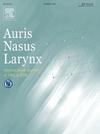目前复发性呼吸道乳头状瘤病的治疗方案:叙述性回顾
IF 1.5
4区 医学
Q2 OTORHINOLARYNGOLOGY
引用次数: 0
摘要
复发性呼吸道乳头状瘤病(RRP)是一种以气道乳头状瘤生长为特征的慢性疾病,主要影响喉部和气管。该病通常由低风险型人乳头瘤病毒(HPV)、HPV6和HPV11引起。RRP的发病率和流行程度因国家而异,根据最近的一项全国调查,在日本,发病率估计为每10万名成年人中有0.20人。喉部最常受影响的区域是真正的声带。手术是标准的治疗方法,尽管首选的手术器械,如二氧化碳激光、微型除颤器和冷器械,随着时间的推移已经发生了变化。目前在美国和欧洲最常用的是微型除颤器,而在日本最常用的是冷除颤器。上述日本全国调查分析了150例新诊断的成人RRP患者接受手术作为初始治疗的结果,显示根据Kaplan-Meier曲线估计的1年和2年无复发率分别为55.8%和47.9%。复发在多个区域的患者中也比在单个区域的患者更常见。由于该疾病的难治性,通常需要辅助治疗来控制它。虽然没有与RRP一起使用的标准药物,但在临床实践中已经使用了几种药物,包括病灶内注射西多福韦,病灶内或全身注射贝伐单抗,以及HPV疫苗。增强抗肿瘤t细胞反应的免疫学方法,如免疫检查点抑制剂,也得到了关注。到目前为止,只有少数关于RRP的手术和药物治疗的小型随机对照试验被发表。需要更大的队列和更长的随访期进行进一步的研究,以确定适当的RRP治疗策略。本文章由计算机程序翻译,如有差异,请以英文原文为准。
Current treatment options for recurrent respiratory papillomatosis: A narrative review
Recurrent respiratory papillomatosis (RRP) is a chronic disease characterized by papillomatous growths in the airway, predominantly affecting the larynx and trachea. The disease is generally caused by the low-risk types of human papillomavirus (HPV), HPV6 and HPV11. The incidence and prevalence of RRP vary from country to country, and in Japan the incidence is estimated to be 0.20 per 100,000 adults, according to a recent nationwide survey. The most commonly affected region in the larynx is the true vocal folds. Surgery is the standard treatment, although preferred surgical instruments, such as the carbon dioxide laser, microdebrider, and cold instruments, have shifted over time. Currently the microdebrider is the most commonly used instrument in the United States and Europe, while cold instruments are the most common in Japan. The above-mentioned Japanese nationwide survey analyzed the outcomes of 150 newly diagnosed adult RRP patients who underwent surgery as an initial treatment, and showed that the estimated 1-year and 2-year recurrence-free rates according to the Kaplan-Meier curve were 55.8 % and 47.9 %, respectively. Recurrence was also significantly more common in patients with lesions in multiple regions than those with lesion(s) in a single region. Due to the intractable nature of the disease, adjuvant therapy is often required to control it. Although there are no standard drugs that are used with RRP, several agents have been used in clinical practice, including the intralesional injection of cidofovir, the intralesional or systemic injection of bevacizumab, and the HPV vaccine. Immunological approaches that enhance antitumor T-cell responses, such as immune checkpoint inhibitors, have also gained attention. To date, only a few small randomized controlled trials of surgery and pharmacotherapy for RRP have been published. Further research with larger cohorts and longer follow-up periods is needed to determine the appropriate treatment strategy for RRP.
求助全文
通过发布文献求助,成功后即可免费获取论文全文。
去求助
来源期刊

Auris Nasus Larynx
医学-耳鼻喉科学
CiteScore
3.40
自引率
5.90%
发文量
169
审稿时长
30 days
期刊介绍:
The international journal Auris Nasus Larynx provides the opportunity for rapid, carefully reviewed publications concerning the fundamental and clinical aspects of otorhinolaryngology and related fields. This includes otology, neurotology, bronchoesophagology, laryngology, rhinology, allergology, head and neck medicine and oncologic surgery, maxillofacial and plastic surgery, audiology, speech science.
Original papers, short communications and original case reports can be submitted. Reviews on recent developments are invited regularly and Letters to the Editor commenting on papers or any aspect of Auris Nasus Larynx are welcomed.
Founded in 1973 and previously published by the Society for Promotion of International Otorhinolaryngology, the journal is now the official English-language journal of the Oto-Rhino-Laryngological Society of Japan, Inc. The aim of its new international Editorial Board is to make Auris Nasus Larynx an international forum for high quality research and clinical sciences.
 求助内容:
求助内容: 应助结果提醒方式:
应助结果提醒方式:


